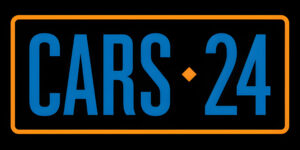
Virtual digital assets (VDAs) and Web3 technologies continue to take the world by storm as we witness heightened interest in their applications and more users entering the terrain. Digital asset wallets or Web3 wallets are a sophisticated gateway to the nascent and nuanced Web3 industry. Depending on the needs and goals of users, there are different types of wallets to provide optimised solutions for users to choose from. However, they all serve the common purpose of allowing users to send and receive digital assets or access decentralised applications (DApps)
As a globally leading blockchain ecosystem and VDA infrastructure provider, Binance is committed to providing a suite of services to help onboard the next billion people into Web3. In light of this pursuit, Binance recently launched the Binance Web3 Wallet, a self-custody VDA wallet within the Binance app designed to empower users in decentralised finance (DeFi) platforms and social networks. The Web3 wallet also paves a novel way for brands to engage with their communities by airdropping custom NFTs or similar memorabilia to users directly.
Simplified token swap solutions
A tell-tale sign of a good Web3 wallet lies in its potential to provide an easy user interface for interacting with multiple DApps. The ability to easily exchange tokens, swap tokens, or engage in on-chain activities is often crucial for participation in Web3 and DeFi protocols. Token swaps are a common use case of Web3 wallets. The process involves one type of VDA being exchanged for another at a predetermined rate. Swaps can also occur when users move a digital token from one blockchain to another. Many DeFi services operate on specific, distinct tokens. Thus, a seamless interchange of tokens can help pave the way for greater liquidity and participation.
The Binance Web3 Wallet offers an intuitive interface for exchanging tokens across various blockchains. Due to its integration with Binance Bridge, a blockchain interoperability solution, users have the flexibility to swap thousands of tokens across various blockchain networks at a competitive price.
Opportunities to earn
Web3 wallets are more than just tools for swapping and spending; they can also serve as an avenue for participants to earn income and rewards. Essentially, Web3 wallets function as a bridge or browser that connects individuals to the diverse world of DApps and innovation. This digital gateway allows users to participate in staking, yield farming, and airdrops or leverage other financial instruments to earn income.
Staking: Several Web3 wallets support the staking of various tokens, allowing users to stake their tokens in a blockchain network of their choice for a stipulated period of time. Users can then earn rewards for helping to support and increase the stability of the network.
Yield farming: Web3 wallets allow users to participate in yield farming by lending their tokens on DeFi platforms to boost liquidity and the growth of the ecosystem. In return, they can earn interest through the generation of additional tokens or a share of the transaction fees.
Airdrops: Some networks occasionally distribute tokens freely, and users can receive new tokens directly into their digital wallets. In bounty airdrops or holder airdrops, users will receive rewards for completing tasks or holding specific tokens.
There are many ways that an individual can earn passive income through Web3 opportunities, and it is usually easy to gain eligibility to participate in these activities and receive rewards. For instance, Binance is running a ‘Swap to Win’ airdrop from December 5 to 31, 2023. Users simply need to use the Binance Web3 wallet to make a token swap, and they can share a reward pool of up to $500,000 in tokens, with the opportunity for one user to earn 1 BTC.
Keeping assets secure with Web3 wallets
The safety of one’s VDAs ultimately boils down to the type of wallets users choose to manage and store their funds in. While there are many options available, self-custodial solutions have long been praised for their security and autonomy. In a self-custody wallet, the user possesses the private keys and has complete control over their funds.
However, this also means that the responsibility is entirely on the user to manage and secure their private keys. Due to security reasons, self-custody wallets generally provide users with a “seed phrase” instead of direct access to one’s private keys. Seed phrases are a set list of 12–24 words designed to restore and protect access to one’s private keys. In the unfortunate scenario that users lose this seed phrase, they risk losing access to all their digital assets permanently.
The Binance Web3 Wallet stands out amongst other self-custody wallets by removing the need for a traditional seed phrase by adopting multi-party computation (MPC) technology. Through this cutting-edge technology, three separate key-shares are generated and stored in different places to form a secure key management system that is created without a single point of failure. By circumventing the need for a seed phrase, it offers a more flexible and secure self-custody solution.
The future of Web3 wallets
Marked by enhanced security features, convenience, and efficiency, the future of Web3 wallets looks promising. The evolution of this innovation will likely parallel the growth of blockchain technology and VDAs, facilitating increased user control over digital assets and funds. As we tread further into the digital age, the capabilities of Web3 wallets are expected to expand, fostering a more decentralised and secure world of online transactions and innovative asset management.



![Read more about the article [Funding alert] Gurugram logistics startup Ecom Express raises $20M from CDC Group](https://blog.digitalsevaa.com/wp-content/uploads/2021/03/funding22-1615277744312-300x150.jpg)



![Read more about the article [Funding alert] Extracurricular learning platform Spark Studio raises seed round from Better Capital](https://blog.digitalsevaa.com/wp-content/uploads/2021/05/Imagew5lu-1621317830396-300x150.jpg)


